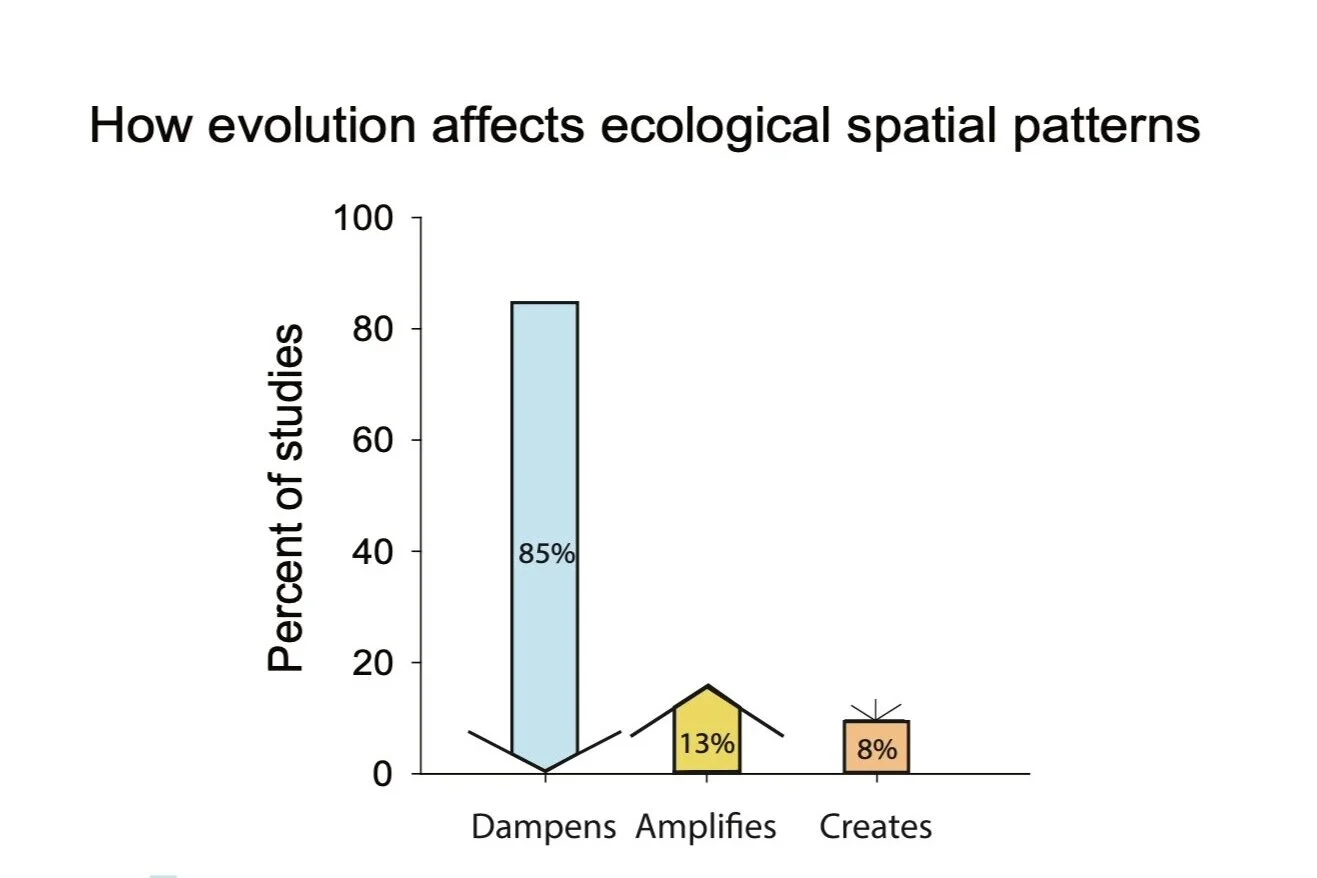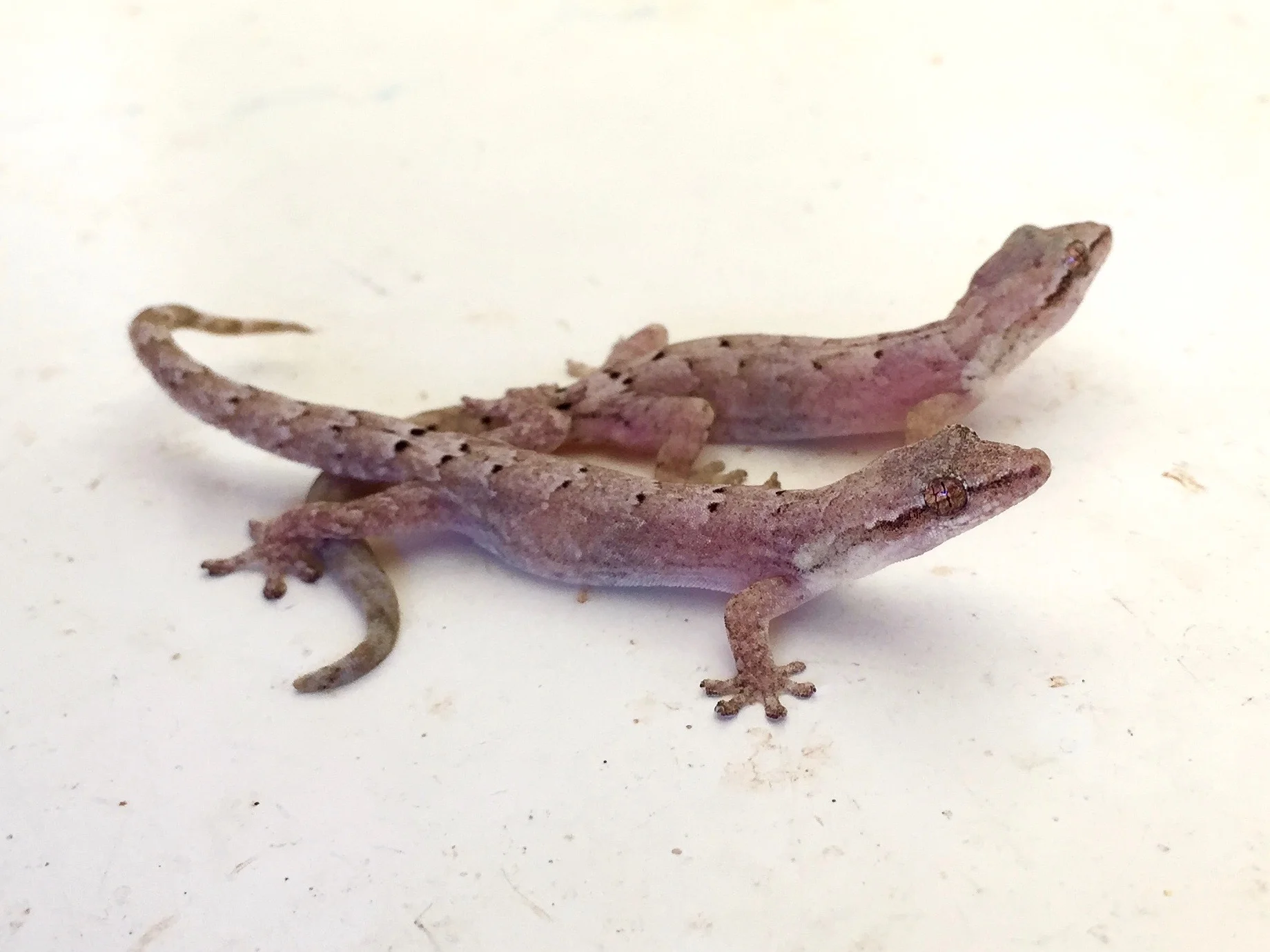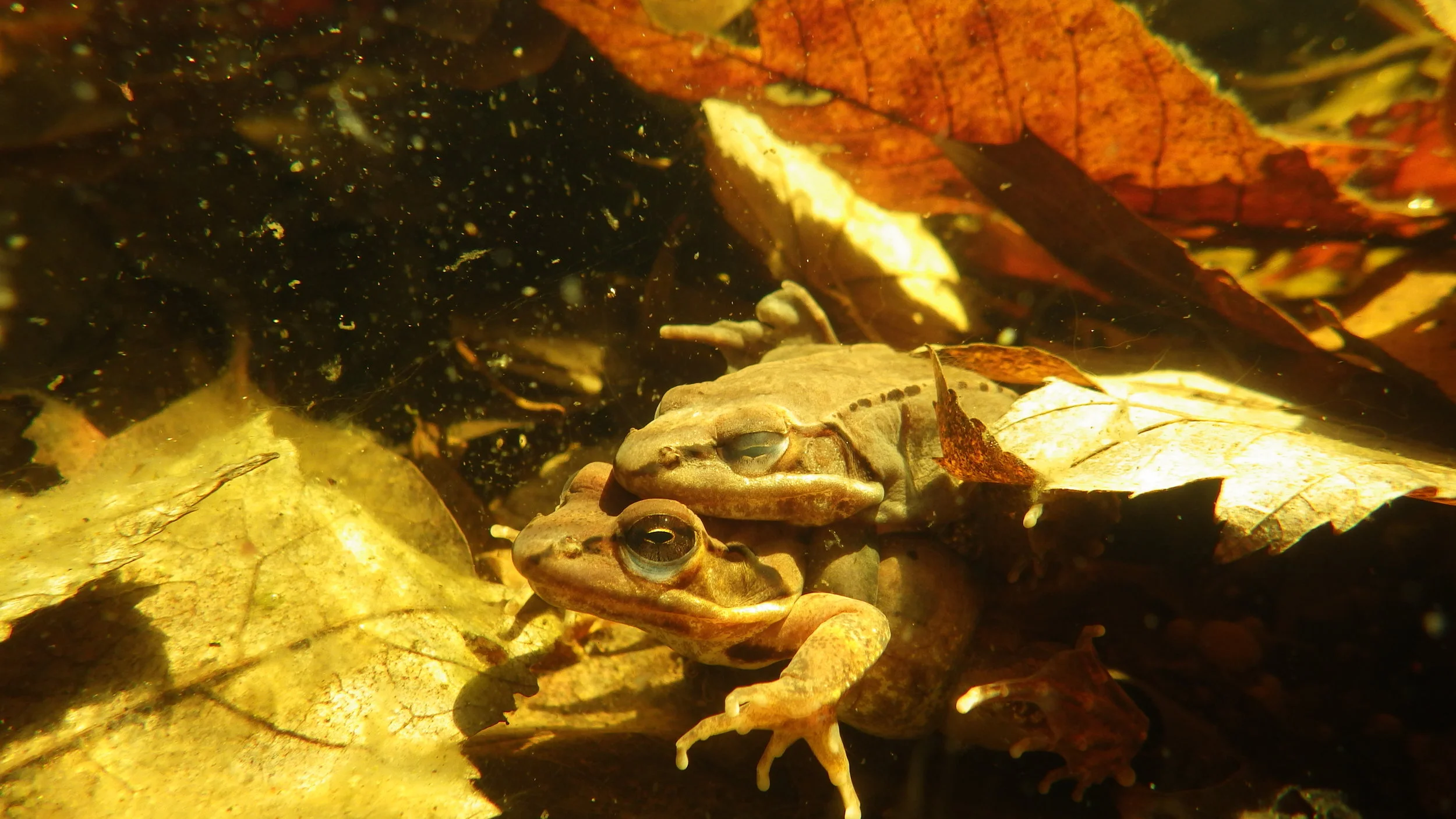We have been awarded a new NSF grant to collate and analyze decades of ecological and evolutionary data from The Bahamas. We’re super excited to get started!
Read MoreWe received a generous grant from the 1804 Fund to expand and upgrade our mesocosm facility! These funds will pay for a wide range of upgrades to our mesocosm facility here at OU! There are too many enhancements to list here, but the primary item will be installation of a high-capacity, all-season electrical supply dedicated to the mesocosm facility. This upgrade will enable a much wider range of experiments as well as continuous sensing of water parameters. Thanks to the 1804 Fund for it’s generous support!
Read MoreCan intraspecific variation in a widespread, common salamander affect aquatic ecosystems? That’s the question that Jon Davenport (Appalachian State University) and I set out to answer. Using a mesocosm experiment we show that yes, evolved intraspecific color variation in Spotted Salamanders just might be ecologically relevant!
Read MorePositions are focused on the ecology and evolution of reptiles and amphibians. Prior expertise in these organisms is not required. See the OU webpage for PACE application information: www.ohio.edu/financial-aid/types/employment/pace
The Department of Biological Sciences at OU has a great foundation in Evolutionary Ecology and I’m pleased to be joining this group of tremendous researchers. Prospective graduate students and interested postdocs should use this form to inquire about opportunities in the lab.
Ohio University is located in Athens— a small, affordable town nestled in the low hills of southeastern Ohio. Come join us!
Read MoreHow will species respond to climate change? Will their ranges expand as mechanisms limiting their geographic range are weakened? In this new paper led by Mark Urban, we develop a mechanistic model that explains current distribution of marbled salamanders at their northern range limit and then project their range expansion given multiple climate change scenarios. The upshot is that marbled salamanders are likely to occupy a larger fraction of ponds and will expand their range north over the next century. A terrific integrative effort by the Urban lab!!
Read MoreSuper excited to share the results of a recent collaboration with Marketa Zimova et al. on their analysis of long-term data on morphological shifts in birds. Essentially, we show that small bird species are changing faster that larger ones. Interestingly, the effects of body size appear independent of generation length suggesting that body size itself is important for determining the strength of selection or the response to it. Either way, these data provide new insights into an explosion of research showing contemporary shifts in body size and morphology is wild vertebrates.
Read MoreTerrific artwork and text summaries by Abby McBride/Sketch Biologist featuring our recent Oikos Forum paper: An eco-evolutionary perspective on the humpty-dumpty effect and community restoration. A great paper led by Dr. Annette Evans that leverages the Humpty-Dumpty metaphor to explore the role of contemporary evolutionary change in the restoration of communities and ecosystem. It was a great exercise; one that we believe will help a wide range of ecologists and conservationists frame the various outcomes of ecological restorations. It’s wonderful to see this wonderful supplemental coverage by Oikos!
Read MoreCool new paper on resource use in Puerto Rico anole lizards with Drs. Ingram and Losos. We examined variation in structural microhabitat, thermal habitat, and prey use in an assemblage of six anoles belonging to three ecomorph categories in a Puerto Rico. Our analysis largely corroborates existing hypotheses that anole adaptive radiation and community assembly is predictable with clear structural habitat divergence among ecomorphs, and secondary divergence within ecomorphs (i.e., among species) using different climatic niches. The hierarchical approach we employ presents opportunities for a comparative approach to understanding how ecological diversity is partitioned within communities.
Read MoreAfter the establishment of the Brahminy blind snake (top panel), Abaco Island in the Bahamas now has two species of blind snakes. Similarities between this global invasive and the native Cuban brown blind snake (bottom panel) suggest that this new introduction is a potential threat. Over the last several years, multiple species of reptile and amphibians have invaded and become established on Abaco. Photo credit Tyler B. Devos.
Read MoreMeasuring standard metabolic rate of spotted salamander larvae. In this study, we tested a widespread assumption that metabolic rate does not evolve within species. Our results show that in fact, metabolic physiology does exhibit microevolutionary variation - at metapopulation-level spatial scales. These findings suggest that evolved differentiation in metabolic physiology occurs at the finest of spatial scales.
Read MoreSpotted salamanders (Ambystoma maculatum) produce two kinds of egg jelly, white and clear. Females deposit these egg masses on the bottom of temporary ponds in spring.
Read MoreA new paper led by Marketa Zimova from the University of Michigan uses historical resurveys to show that rapid climate change and static molt phenology in a seasonally color-changing mammal, the mountain hare, has resulted in a continuing decline in camouflage.
Read MoreLast year Market and I deployed our camera trap array at Kellogg Biological Station in SW Michigan. This year, we’re surveying Central Pennsylvania, just a few miles from State College. We’ve got our 12 cameras out in Rothrock State Forest (with permits). A quick checkup on batteries and SD card showed this camera was working just fine.
Read MoreA new paper in PNAS lead by Mark Urban argues that evolution tends to dampen spatial heterogeneity in ecological conditions. The mechanisms vary, but adaptive evolution tends to minimize extinction and homogenizes population abundances in space - regardless of underlying environmental conditions.
Read MoreWith collaborators Jonah Piovia-Scott, Jason Kolbe, and Oriol Lapiedra, I recently returned from a NSF-funded research trip to Abaco Island, The Bahamas to assess how a model system of island ecosystems fared after Hurricane Dorian. The trip was short but productive, setting the stage for a followup trip - hopefully sometime in 2021.
Read MoreA successful research trip to Barahona peninsula in the Dominican Republic. It wasn’t my research, by I’m always happy to lend a hand! A bit of adventure and loads of new species observations such as this little Anolis brevirostris.
Read MoreIn this new Ecology paper led by James Stroud at Wash U, we couple widespread surveys with historical data to reveal a striking contingency in the assembly of an invasive anole community in Bermuda.
Read MoreIn Reptiles and Amphibians I report a new population of Mourning Geckos found on Abaco Island, The Bahamas.
Read MoreIn a recent post to Eco-Evo Evo-Eco I provide some background behind my recent Quarterly Review of Biology paper on the eco-evolutionary dynamics of sexual selection.
Read More



















